#Gallo-Roman polytheism
Text
God of the Good Axe,
Flame Burning Eternal,
Sutugius Mars,
I invoke thee.
Wrap my body in protective flames,
and fill my heart with warmth.
Let your light shine on my land,
and upon my soul,
and fill it with power and strength.
To you I fulfill my vow,
and raise my praise to the sunny sky.
13 notes
·
View notes
Text
hi hello! my name is anne and i'm a 35 y/o woman living in the upper midwestern us. i share a home with my fiancé, our housemate, two cats, and far too many books, rocks, plants, and jars.
this is a spot for me to explore and share my spiritual practices, as well as little bits of my daily life. i've been a polytheist and occultist of various stripes since i was a kid — over 20 years — and i have a lot to say. but i still have a lot to learn, too.
all the minutiae below the cut.
⋮► traditional witchcraft, whatever that means these days. magic, alchemy, herbalism, divination, astrology, etc etc etc — all informed to a greater or lesser degree by folklore and historical record.
what i practice:
⋮► a weird mishmash of interrelated polytheisms — mostly roman, with a some heaping scoops of gaulish and brittonic mixed in. also a couple of greek and kemetic deities. help me.
⋮► bioregional animism, expressed through closeness with the natural world. i try to live with the rhythm of the seasons and to be a good steward of the land, her creatures, and her spirits.
who i honor:
⋮► the aventine triad (ceres, liber, and libera), juno, mercury, trivia, rosmerta, and sirona. the holy family, as part of my ancestral practice.
⋮► the matres, lares, penates, and my ancestors. my teachers and guides, both living and dead. the witch mother and witch father.
#polytheism#paganism#roman polytheism#cultus deorum#religio romana#gallo-roman polytheism#gaulish polytheism#gaulpol#brittonic polytheism#traditional witchcraft#tradcraft#folkloric witchcraft#historical witchcraft
12 notes
·
View notes
Text
Thank you for the winds which carry your powerful paroxysms .
Thank you for the rain which strengthens and nourishes my home.
Bring the heavy rains which soak our ground with you almighty power.
Blow the winds and spread the seeds of life to regenerate what we have destroyed.
Awaken us with your commanding call and announce your undeniable presence,
So that we may remember again.
Thank you Taranis of the Sky, for this beautiful gift you have given me today.
May you continue to grace us with what we so desperately need.
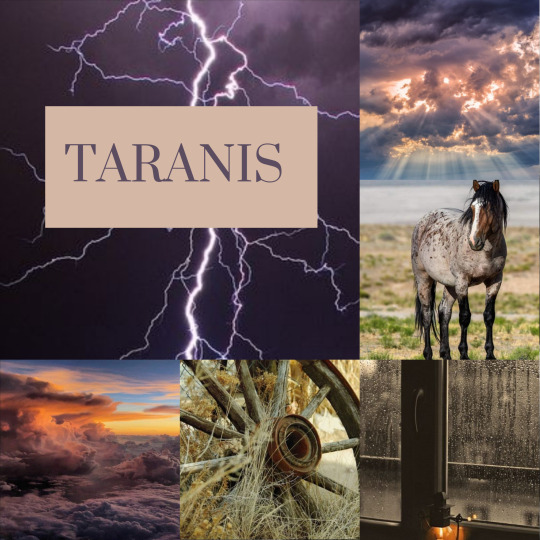
Taranis
Gallo-Roman God of: Thunder, lightning, thunderstorms, the spoked wheel, and protector. Sometimes attributed to Jupiter.
#taranis#gaulish paganism#gaulish polytheism#roman paganism#roman polytheism#celtic polytheism#polytheism#polytheist#god of thunder#thunderstorms#paganism#pagan#moodboard#prayer#devotional prayer#gratitude#occult#occultism#gallo roman#Gallo-Roman paganism#Gallo-Roman polytheism#devotional moodboard
15 notes
·
View notes
Text

Credits to the wonderful people of NorthMyth on Etsy for their impeccable craftsmanship and speedy delivery. Support them, if you can. Ukrainian artists deserve our aid!
#statues#statuettes#woodcarving#woodcarvers#gods#pagan#pagan gods#gaulish pagan#roman gods#Gaulish#Roman#roman paganism#gaulish polytheism#roman polytheism#gallo roman#Gaul#Moccus#cernunnos#Epona#Sulis#Taranis#Janus#Ukrainian#ukrainian art#ukrainian artists#polytheism#paganism#Celtic#Celt paganism#celtic polytheism
140 notes
·
View notes
Text

The Celtic goddess Sequana in her duck-boat.
Bronze, Gallo-Roman era, Archaeological Museum of Dijon
#cultus deorum#celtic#celtpol#gaulpol#gallo-roman#archaeology#roman archaeology#celtic art#sequana#polytheism#gaulish polytheism#gaul#oh she comin#the duck is holding a ball in its mouth#also the boat is LITERALLY a duck#it doesnt get better than this my friends
109 notes
·
View notes
Text

Diana and Roman-Celtic Syncretism
═══════ ◖◍◗ ═══════
introduction
[images in this post have been added for aesthetic purpose only and do not contain relevant text. any relevant images will be described using image ID]
As a witch, I make it my aim to know the Gods as well as I possibly can, to explore their many epithets, counterparts and aspects. When I first started, I initially followed the Hellenic Pantheon, this then expanded into their Roman counterparts, and by extension of this, I explored not only the original Celtic Polytheism (in particular the Tuatha De Dannann, the Irish Gods, but the Gaulish epithets of the Roman Gods.
Very recently, I came back into contact with Diana-Artemisa. I had honoured her previously, but I was interested in reconnecting to the earth and to the forest, and she was there for me. This initiated my research into today's topic, Roman-Celtic syncretism of the Goddess Diana.
A few notes before we get started. Today I am focusing on the Gaulish-Celtic regions, so I will refer to the Gauls, Gaulish worship and language accordingly. I am also referring to Diana-Artemisa as 'Diana' as today we are specifically looking at Roman-Gaulish Syncretism, so she is being referred to as her Roman face.
Hope you enjoy the post!
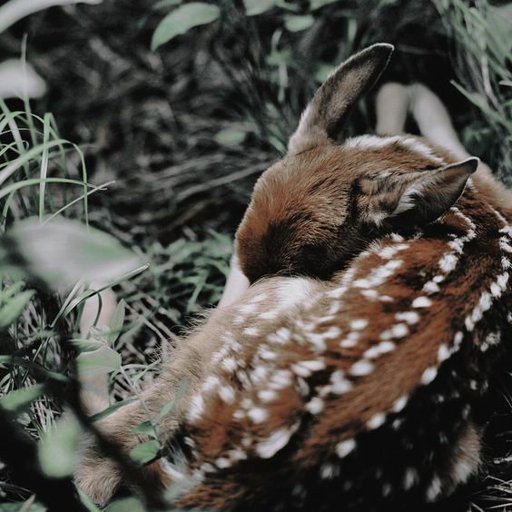
═══════ ◖◍◗ ═══════
religious syncretism
Religious Syncretism is a topic that has been discussed in this community before, and has been done so in a more sophisticated manner, and I thoroughly recommend further research on the topic outside of my post.
To put it simply, religious syncretism is when multiple religions or aspects of a religion are in contact and begin to mix or combine. This often happens between regions that are close to one another geographically, through trade routes, regular communication through regions, but it can also take place as a result of war, imperialism or colonisation, which is important historical nuance to consider when approaching this subject.
In terms of Roman religion, that which we are discussing today, Roman society had a tendency towards Syncretism. The connection between Greek and Roman religion for example is often discussed, the Romans identifying their own Gods, sometimes seen as counterparts of the Hellenic Gods, by similar powers.
Religious Syncretism also happened between Roman and Gaulish religions, Gallo-Roman religion was a result of occupation from the ruling Roman empire. While the Roman's did not necessarily impose their religion and gods (though they did impose themselves in other ways such as taking over the land through imperialist means), Roman-Gaulish religion is characterised by how the Gauls adopted Roman language, culture and beliefs.
With that established...

═══════ ◖◍◗ ═══════
Gaulish Worship of Diana
Diana is primarily known as a Virgin Goddess, a Goddess of the Hunt, protector of women, Goddess of both the Moon and the Forest, and in Gaulish worship it is clear that she was seen as relatively important and that her worshippers were faithful to her. Diana became associated, or seen as one and the same as a few pre-existing goddesses, which i will discuss further in detail in a few moments.
In Gaul, Diana was frequently attributed the Epithet "Augusta", 'regina', meaning Queen. She was often also referred to as being holy, which was not used as a descriptor for all deities at the time. Across Gaul, there were something of 85 inscriptions written in the name of Diana, while 13 also appeared in Great Briton, Diana's worship while often seen specifically in Gaul also extended to other Celtic regions such as Briton.
While it cannot be argued that Diana is the most significant deity within Gaul, her worship and importance cannot be denied, the label of her as a queen indicates very clearly that Diana was revered. The Gauls worshiped Diana much as they worshiped other deities, honouring the Goddess within the Cult regulations of the Temple of Aventine (the temple being significant in Diana's association as a protector of Refugees). They also notably celebrated her on the day of Nemoralia.
Part of the Gaul's association with Diana comes from Diana of Esphesus, a sanctuary dedicated to the goddess within Asia Minor, which was well known for it's cults dedicated to 'mother goddesses'. The Artemision was a place in which Diana-Artemisa was worshiped in extraordinary proportion, which extended to regions outside including Phœcia. It was when that the Phœcians arrived on a southern coast of Gaul (Marseille) escaping exile that a new cult of Diana of Esphesus was established within their new colony, this implying that Diana was the first deity of Hellenistic origin that the Gauls may have interacted with (though this cannot be confirmed because of natural syncretism on trading routes etc). This epithet of Diana came to be associated with the protection of foreigners, refugees and - as an extension, sharing religion across cultures.

═══════ ◖◍◗ ═══════
Diana Abnoba
Diana as a deity is notable for being associated and considered "one" with other deities and beliefs, an example being her Triple Goddess form as Diana-Luna-Hecate, an avatar of Diana in which herself, Dea-Luna (a distinct Goddess of the moon, sister to Sol) and Hecate.
Diana queen of the groves, thou who in solitude lovest thy mountain-haunts,
and who upon the solitary mountains art alone held holy,
change for the better these dark, ill-omened threats.
O great goddess of the woods and groves,
bright orb of heaven, glory of the night,
by whose changing beams the universe shines clear,
O three-formed Hecate, lo, thou art at hand, favouring our undertaking.”
—Seneca, Phædra, ll. 406-412 (trans. Miller).
These three forms may correspond each goddess to a particular phase of the moon, but most interestingly to me it associates Diana with the practice of magic in Gaul, for while Hecate was known she was never invoked by name. Hecate; as a goddess of witchcraft and sometimes seen by the modern witch as being associated with Faeries (later Roman scripture citing her as the Queen of Faeries), it also connects Diana to these ideas.
With this established, what I found most interesting about Diana-Abnoba is her connection to water.
Diana-Abnoba, or simply Abnoba is often known as Diana's face in the black forest region. She is a goddess of Nature, mountains and the hunt, and her most prominent symbol is the black forest itself, the mountain range in Baden-Würtemburg, a mountain within the area owing it's name, apparently, to her.
The goddess was also well known as being a deity of river and forest, her influence was massive, and as a water deity many rivers in England were named in her honour. Revered as a Patroness and Protector of Springs, rivers, woods wild animals and children, when translated her name can mean 'She of River Wetness'.
Even at a first glance, Abnoba's associations as a goddess of forest, hunt, wildlife and childbirth invoke the image of Diana. However she is very often seen as being the Epithet of Diana worshiped in the Black Foret Region, an Altar in BadenWeiler Germany (at the Roman Baths) associates the two by name.

[Image I.D - a photo of a stone shrine in front of a brick wall. The shrine reads "Dianae Abnobæ Msennvs Frontosl Ex Voto". End I.D]
Diana's worship across the black forest region was widespread, with multiple altars being inscribed both to her and Abnoba.
Prior to discovering this I was entirely unaware of Diana-Artemisa having any associations with water, but it seems the epithet Abnoba ties her very close to them, particularly rivers and springs. With Diana's associations with life, it can be fair to assume her association with water also comes from it's life giving qualities, particularly her being a patroness of springs and rivers. To me, Diana-Abnoba is an important epithet in my craft as a water witch, and I hope to communicate with her more in future.

═══════ ◖◍◗ ═══════
Diana Arduinna
Arduinna is a Gaulish Woodland Goddess whom is associated with Wild nature, mountains, rivers, forests and hunting, much like Diana and Diana-Abnoba. As a goddess, she was both seen as a hunter of the forest and their protector of the Flora and Fauna.
Widely worshipped around the regions of the Ardennes, she is also associated with the forest of Arden in England. I find it interesting that while in this post I have looked mostly at Gaulish Worship, much of my research has come back to England, where I am from.
Arduinna was often depicted as a young woman surrounded by nature, riding a Boar and holding a spear (this is one notable difference between Diana and Arduinna, for Diana is more associated with the Bow and Arrow). The image of her upon a wild boar also symbolises her power and strength, for that is what boars were seen as, as well as being vital for life as a food source.
The only surviving depiction of Arduinna is a bronze Gallo-Roman statue of a woman riding a boar holding a dagger. However, the statue bears no inscription, and was simply assumed to be Arduinna in the 19th century. Diana and Arduinna are often identified with one another, a similar bronze statue existing in the British Museum from the collection of Richard Payne Knight is traditionally labelled as "Diana", their associations being tied in art dedicated to them. Interestingly, the statues are both headless.
Historically, Arduinna and Diana have been associated together and have been written about in Gregory of Tours account. In which, a preacher known as Walfroy preached to the population of Villers-devent-Orval in Ardennes as an attempt to discourage them from worshiping the goddess Diana. According to Gregory of Tour's writing, there was a large stone statue of Diana of which people would make their dedications to her. Unfortunately, the statue was pulled down and demolished by the preacher and his followers. Here we can see that Diana and Arduinna are identified historically in the Ardennes region. It also may explain why so few depictions of Diana-Arduinna remain, due to demolishment and interference from the church.

═══════ ◖◍◗ ═══════
Bibliography
http://www.deomercurio.be/en/dianae.html#abnobae
https://symbolsage.com/nature-goddesses-names/
Green, Gods of the Celts, 1986,
Dictionary of Gaulish Language
https://artsandculture.google.com/entity/arduinna
/m0lt0l?hl=en
https://www.britannica.com/topic/Diana-Roman-religion
https://www.oxfordbibliographies.com/view/document/obo-9780195389661/obo-9780195389661-0059.xml
https://www.encyclopedia.com/religion/encyclopedias-almanacs-transcripts-and-maps/greco-roman-religion-and-philosophy
The British Museum Online
#witch#witchcraft#pagan#pagan witch#roman pagan#roman religion#celtic pagan#gaulish roman paganism#gallo roman religion#gaulish polytheism#gaulish pagan#diana#diana goddess#artemis#abnoba#witchblr#paganism#pagans of tumblr
94 notes
·
View notes
Link
A playlist of the presentations at the past weekend’s Gaulish convention!
Myth is Not Religion by Aliakai
Gaulish Runas System from Nemeton Dumnantu
Divine Pairings in Gaulish Polytheism by Nertatis
Frankish Polytheism/Heathenry presentation by the TFA
Abnoda Gaulish/Celtic Goddess of the Wilds by Tricunos
Ritual for Gallo-Roman Mercuralia by Viducos/Deomercurios
Stone age cosmology (neolithic origin for cernunnos??) by Beroki
Secrets of the Rhaetians (IRON AGE ALPS SUN WORSHIPPERS) by Renotauros
Travel Altars & Con wrap up with Reno again
#aliakai#runes#runas#gaulish#Gaulish Polytheist#Gaulish Polytheism#gaulish pagan#frankish#frankish heathenry#heathenry#abnoba#diana#gallo-roman#mercury#mercuarlia#cernunnos#cerunnos*#rhaetians#sun worship#altars#paganism#pagan#polytheism#convention#sirona#taranis#taranos#neopagan#neopaganism#myths
24 notes
·
View notes
Photo
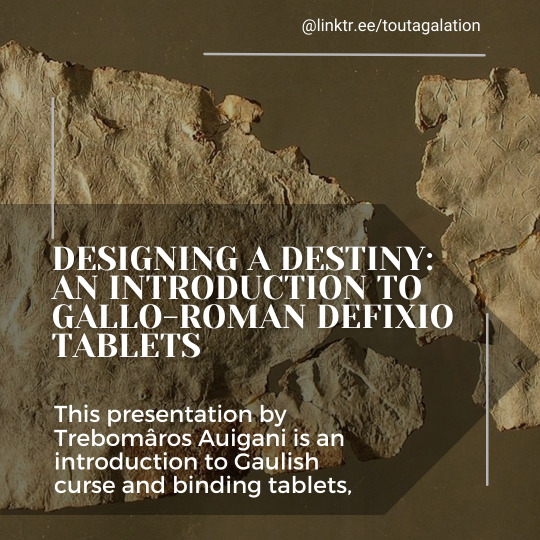
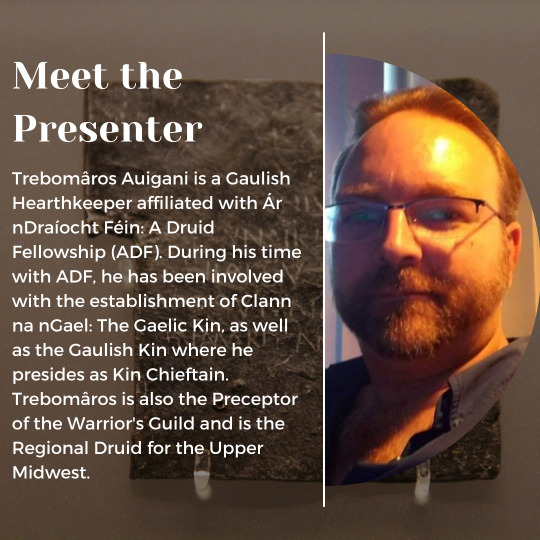
We're back with another reveal for Comreton Calleios! More information on our upcoming free online convention taking place May 27th-28th, 2023 can be found via our linktree.
2 notes
·
View notes
Text

Welp. This may be officially an Artio and Minerva altar after all. The more I sit with it, the more it just feels right.
I had a few house plants here but they didn’t do well - eh combination of abuse and neglect :/ I took them outside on a warm day and forgot about them. They were all too far gone when I brought them back in. Just got a watermelon peperomia who was also complaining, so I watered and moved it to indirect light.
#gaulpol#gallo roman#athena minerva#minerva goddess#artemis#artio goddess#bear goddess#nature goddess#mountain goddess#gaulish polytheism
13 notes
·
View notes
Text
Prōsperīs fruāminī kalendīs jānuāriīs!
Tempus est jūcundum atque aptum ad prīstina cōnsīderanda necnōn cum novitātibus comparanda :)
D. Magnus Ausonius, aetāte imperiī occidentālis paene ultimā burdigalēnsis grammaticus, in imperātōriam grātiam cāsū ferē vēnit ob studium litterārum latīnārum expolītissimum, quārē adductus erat imperātōrī futūrō magister Grātiānō. Mercēdem igitur meruit grātissimam: cōnsulātum annī dominī 379[1]. Sīquidem proprius ferē annus futūrus erat, precēs cōnscrīpsit hexametrās duās, quibus imprecābātur nūmina multa ac varia novum annum īnferentia, ut sibi cōnsulī afforent[2, 3]. Prīmae versiculus saepius cantātus sīc īnscrībitur:
Jāne, venī! Novus anne, venī! Renovāte, venī, Sōl!
Chrīstiānus enim quamvīs conversus habeātur, īnfirmā esse conversum fidē crēditur, quippe quod tam saepe ad nūmina prīsca reversus est, dum scrībēbat carmina.
Happy January Kalends!
It’s a wonderful day to consider the ending of old things and the beginning of things new :)
Decimus Magnus Ausonius was a late Gallo-Roman grammaticus who gained imperial favour through teaching some children from the emperor’s household, including the future emperor Gratian. As a reward for his efforts to educate the princeling, he was granted a consulship in year 379 of the Christian era[1]. Seeing as this was to be (partly) his year, he wrote two prayers in dactylic hexameter for the success of his consulship[2, 3]. One of them has a refrain that goes
Janus, come! New year, come! Sun, made new, come!
Ausonius seems to be regarded as a crypto-polytheist, who, although converted to Christianity, remained strongly influenced by traditional polytheism, as can be seen in the extremely polytheist imagery and themes in his poetry.
[1] https://en.m.wikisource.org/wiki/1911_Encyclopædia_Britannica/Ausonius,_Decimus_Magnus
[2] https://www.perseus.tufts.edu/hopper/text?doc=Perseus:text:2008.01.0623
[3] https://www.perseus.tufts.edu/hopper/text?doc=Perseus%3Atext%3A2008.01.0623%3Asection%3D6
4 notes
·
View notes
Text
worldview and wandering
Staring out in paganism, it can be overwhelming to find your place in all of the different traditions. In my personal practice so far, I’ve mostly been looking at reconstructions of European religions from the Roman era and later. Even within these constraints, I’ve learned about a seemingly endless number of religions. Advice on which tradition to follow tends to lean heavily on ideas of ancestry, occasionally skirting the slippery slope to racism and exclusion. Instead, I would encourage beginners to focus on the idea of worldview.
What has brought me back to Gaulish polytheism again and again is its worldview. The opposing, yet not dualistic ideas of samos and giamos. The connection between us and the other. The continuation of the soul. All of these ideas have resonated with me deeply.
On the other hand, there are worldviews that just haven’t worked for me. There was a while where I was looking to simplify my worship, so I thought maybe I should drop the Gallo from Gallo-Roman. I pretty quickly learned that even though the gods were called the same names, they were very different in a purely Roman context. Between the strict nature of ritual (I have to apologize in case I did something wrong? And I have to keep an eye out for omens of disapproval?) and the strong hierarchy of the household (being the ‘head of the household’ feels very empty when you’re a solitary practitioner), I pretty much gave up before I even began. That’s not to say I think Roman polytheists are doing anything wrong, I can just acknowledge it’s not for me.
If you’re trying to find tradition that works for you, I would encourage you to wander widely. Learn about different places and different times, going beyond just the pantheon, dive deep into how the people who inspired modern traditions saw the world. This also means challenging your preconceived worldview. Not too long ago, I was a strict monotheist, but here we are now. By opening yourself to ideas you may have never even heard of, you allow yourself to find new ways to interact with the divine. That’s the beauty of polytheism after all!
1 note
·
View note
Text
prayer for an evening shower
Braton tei, Apollo Grannus,
Braton tei, Sirona,
For this water that I use this evening,
And its cleaning effects,
I praise you!
.
And I praise the many others,
Gods, spirits, and my fellow humans,
Who helped to bring this water here from far away.
Braton tei!
.
May this water cleanse my body of filth,
That I might be clean, comfortable, and healthy
And that I might avoid causing others around me to fall sick.
.
May this water cleanse my soul of filth,
That I might sleep peacefully
And greet the new day with happiness
And with the energy to do my duties.
.
Braton tei, Apollo Grannus!
Braton tei, Sirona!
#gallo-roman polytheism#gaulish polytheism#prayers#.my posts#im not a poet#and uhm im not super happy with the prayers i write#from a literary standpoint#but they do their job to praise the gods and ask for blessings#so i figure ill share them in case others find them useful
9 notes
·
View notes
Text

Votive stele of Cernunnos - Apollo - Mercury - Private Park near Reims - France
#votive stele#cernunnos#apollo#mercury#apollon#mercure#gaulish polytheism#gaulish gods#roman gods#gallo romain#druidisme#druidry#druidic#kernunnos#belenos
177 notes
·
View notes
Text
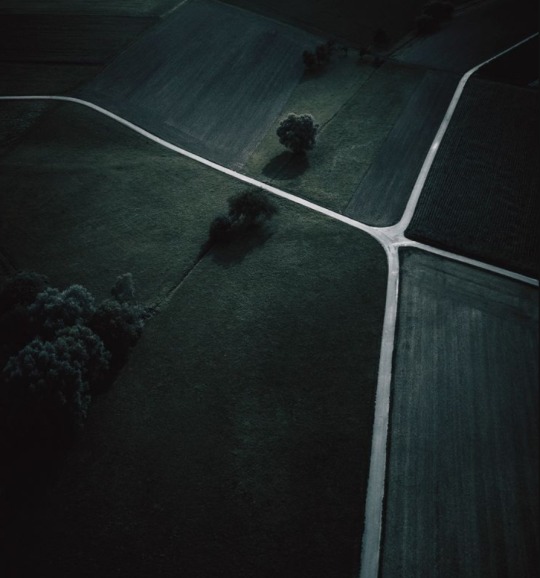

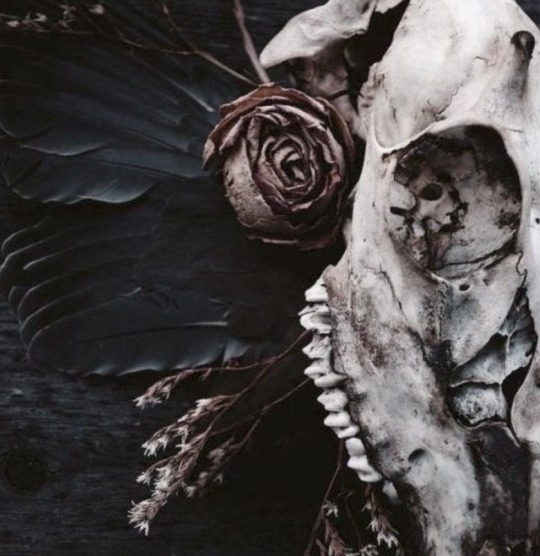
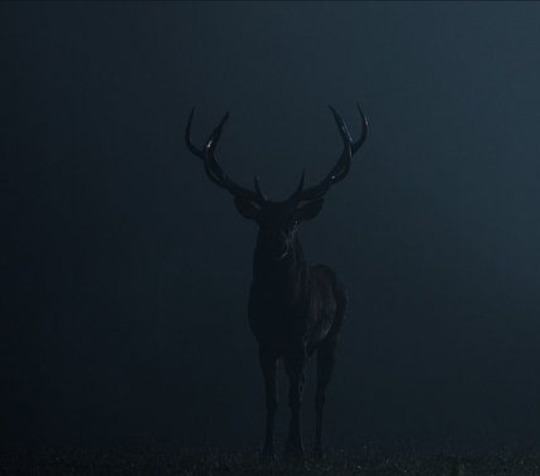

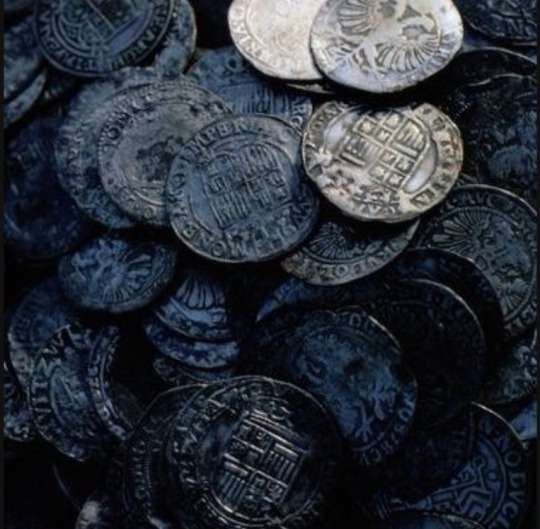
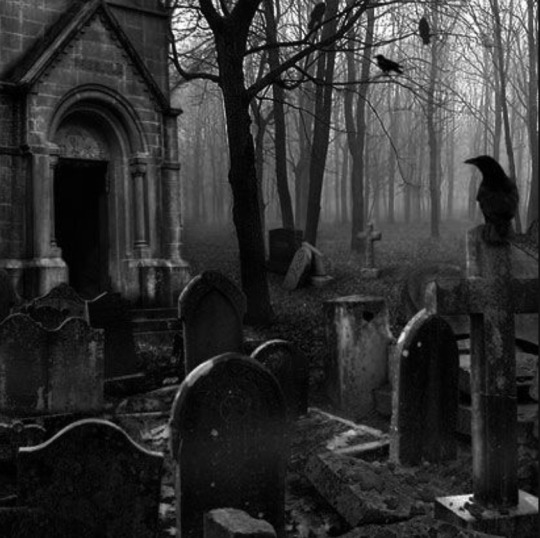

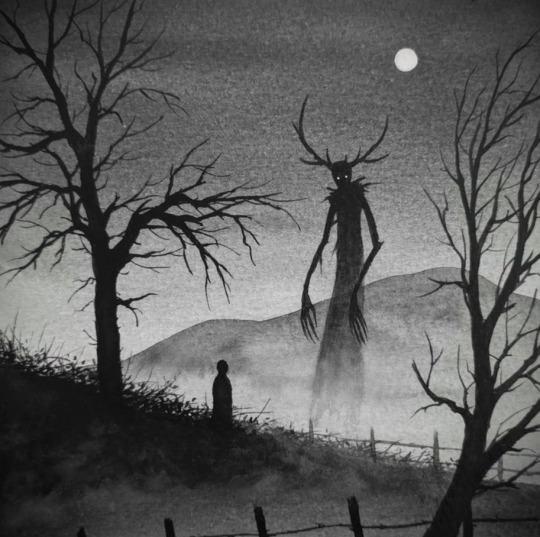
Cernunnos
Gaulish God of liminality, crossroads, death, pastoral wealth, abundance, hunters, the hunted, the wild, and the tame.
#Cernunnos#Carnonos#Karnonos#gaulish gods#gaulish paganism#gualish polytheism#gallo roman paganism#gallic gods#celtic paganism#celtic pagan#celtic pantheon#pagan#deities#polytheism#polytheist#deity#paganism#devotional moodboard#deity moodboard#the horned god#the horned one#wicca#wiccan#paganblr#chthonic#chthonic gods#godspouse#moodboard
30 notes
·
View notes
Text



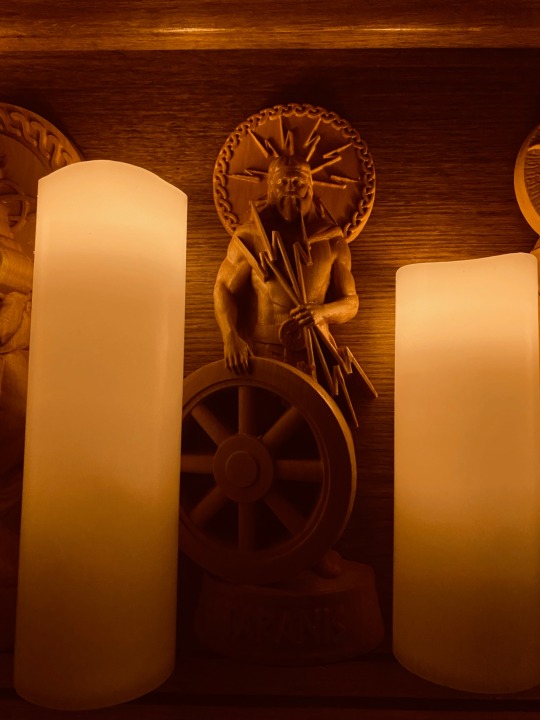



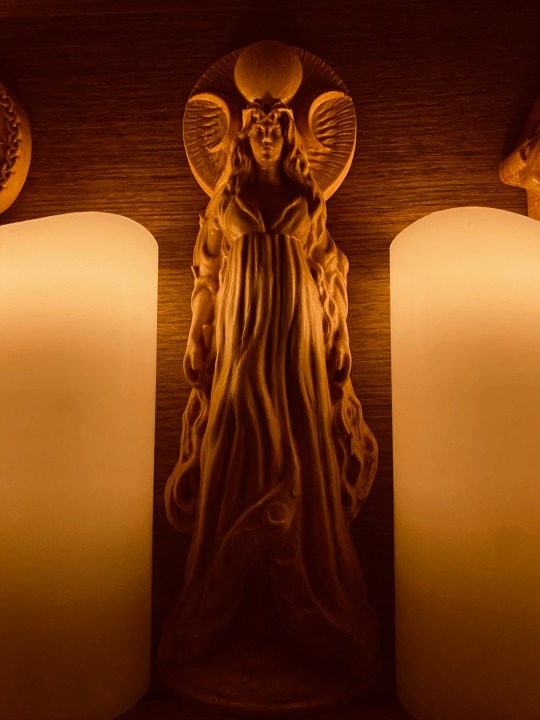
Statues by NorthMyth on Etsy
#Gods#deities#paganism#polytheism#roman#Gaul#gaulish pagan#gallo roman#statues#wooden statues#statuettes#woodcarving#cernunnos#Taranis#Epona#Janus#Sulis#sulis minerva#Moccus#the goddess#art#spirituality#celtic#altar#shrine#candles
18 notes
·
View notes
Text
My Drive Resource Libraries
Feel free to download, share, etc. I found most everything through open access journals, JSTOR, Anna's Archive, sci-hub, pdfs shared on other sns, etc.
Greek Polytheism & Hellenism
Roman & Italic Polytheism
Gaulish & Gallo-Roman Polytheism
Celtiberian Polytheism
#hellenism#helpol#cultus deorum#greek polytheism#polytheism#roman polytheism#gaulpol#gaulish polytheism#gaulish pagan#celtiberian
429 notes
·
View notes